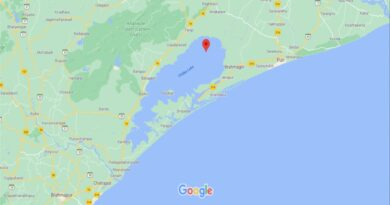Lala Lajpat Rai
About Lala Lajpat Rai:
- Lala Lajpat Rai born on 28 January 1865 in Dhudike district of Punjab.( Death: 17 November, 1928)
- He also built first educational institute R.K. high school in Jagraon.
- He was an Indian author, revolutionary, and politician.
- He played a pivotal role in the Indian Independence movement.
- He was popularly known as Punjab Kesari.
- He was one of the three members of the Lal Bal Pal triumvirate.
- He graduated in law from Government college at Lahore and started his practise at Hissar. Along with Babu Churamani he established the bar council at Hissar
- He was a staunch follower of Hinduism and believed that Hinduism eventually led to the practise of peace and humanity with which a secular nation can be formed.
- He was married to Radha Devi in 1877.
- After being impressed by the Italian revolutionist Guiseppe Mazzini, he was convinced by the revolutionary means of struggle to achieve freedom.
- He was also associated with activities of Punjab National Bank and Lakshmi Insurance Company in their early stages in 1894.
- In 1914, Lala Lajpat Rai quitted his law practise and joined India’s freedom struggle.
- During the freedom struggle, he served several terms in prison.
- He joined the Arya Samaj which was a Hindu revivalist movement founded by Maharishi Swami Dayanand Saraswati. He was a great Arya Samajist of his time.
- He started a journal called Arya Gazette which mainly focused on articles related to the Arya Samaj.
- He died a few weeks after sustaining severe injuries during a baton charge by police when he led a peaceful protest march against the all-British Simon Commission, a commission constituted by the United Kingdom for Indian constitutional reform.
Political Activities and Contributions of Lala Lajpat Rai
- Lala Lajpat Rai joined the Indian Nation Congress in 1881.
- Along with Bal Gangadhar Tilak and Bipin Chandra Pal, Lala Lajpat Rai organised the Extremist group in the Indian National Congress. These three leaders were popularly known as Lal Bal Pal.
- After quitting his law practise, Lala Lajpat Rai left for New York and in 1917 he founded the Indian Home Rule League of America. He was the editor of the monthly published by the League which was named as ‘Young India’.
- After his return from New York, he protested against the Jallianwala Bagh Massacre in Punjab.
- In 1920, he was elected as the president of the special session of Indian National Congress in Kolkata.
- When Mahatma Gandhi introduced the Non cooperation movement, Lala Lajpat Rai led the movement in Punjab. He criticized Mahatma Gandhi for suspending the movement after the Chauri Chaura incident and formed the Congress Independent Party.
- In 1926,, he was elected in the Central Legislative Assembly.
- He protested peacefully against the arrival of the Simon Commission, an all white commission on October 30, 1928. He received severe lathi blows in his chest and eventually he died on November 17, 1928.
- In a meeting which was held after the protest on October 30, 1928, his words ‘Every blow aimed at me is a nail in the coffin of British Imperialism’ became famous.
Organizations And Institutions Started by Lala Lajpat Rai
- He played a crucial role in laying the foundation for the Punjab National Bank in 1894.
- Lala Lajpat Rai was one of the founding members of the D.A.V. College at Lahore.
- He founded a non profit social service organisation called the ‘Servants of Indian Society’ in 1921.
- In memory of his mother, he established a hospital called Gulab Devi Chest Hospital for treating women with tuberculosis
Journals And Literary Works of Lala Lajpat Rai
- Lala Lajpat Rai was a fearless journalist. Journals such as The Panjabee, Vande Mataram (Urdu daily), The People (English weekly) were started by him.
- He was the editor of ‘Vedvrat Visharad’ and he supported the monthly paper ‘Adhikar’.
- Some of the books authored by him are as follows:
- The Story Of My Deportation
- The Problem Of National Education In India
- Unhappy India
- England’s Debt To India
- Message Of The Bhagavad Gita
- The United States Of America: A Hindu’s Impression
- The Depressed Glasses
- Young India: An Interpretation And A History Of The Nationalist Movement From Within
You can find many articles on Modern India (part of GS I) in our website. Go through these articles share with your friends and post your views in comment section.



